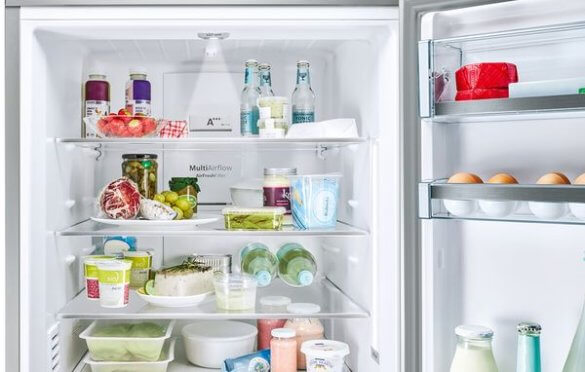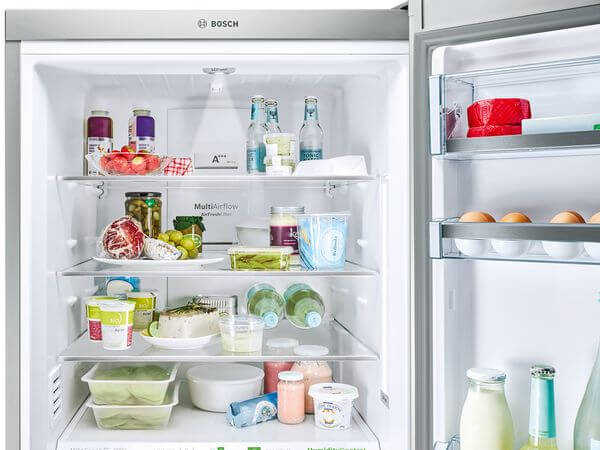
In the realm of kitchen appliances, the refrigerator stands as a cornerstone of modern living. When issues arise, delving into the world of DIY Bosch appliance repair can save both time and money. This detailed guide will navigate you through the intricacies of DIY Bosch refrigerator repair, empowering homeowners to troubleshoot and revive their cooling companion.
Understanding the Significance of Appliance Repair
The refrigerator, a silent workhorse in the kitchen, ensures the freshness and longevity of perishables. When faced with malfunctions, engaging in appliance repair not only restores functionality but also prevents potential food spoilage and costly professional interventions. Addressing issues promptly can be a game-changer in extending the lifespan of your Bosch refrigerator.
DIY Bosch Refrigerator Repair: A Step-by-Step Guide
Note: Before starting any refrigerator repair, disconnect the power source and ensure that the appliance is safe to work on.
- Temperature Fluctuations:
- Thermostat Adjustment:
- Locate the thermostat control inside the fridge.
- Adjust the temperature setting according to your preference.
- Condenser Coil Cleaning:
- Unplug the refrigerator and access the condenser coils (typically located at the back).
- Use a vacuum or a brush to clean the coils from dust and debris.
- Door Seal Inspection:
- Check the door seals for any visible damage or wear.
- Replace damaged seals to ensure a proper seal.
- Thermostat Adjustment:
- Leaking Water Inside the Fridge:
- Defrost Drain Check:
- Locate the defrost drain at the back of the freezer.
- Clear any clogs with a pipe cleaner or hot water.
- Water Inlet Valve Inspection:
- Locate the water inlet valve at the back of the refrigerator.
- Check for leaks and replace the valve if necessary.
- Leveling the Refrigerator:
- Ensure that the refrigerator is level by adjusting the leveling legs.
- A level refrigerator prevents water from pooling inside.
- Defrost Drain Check:
- Excessive Frost in the Freezer:
- Door Gasket Inspection:
- Inspect the door gaskets for any visible damage or wear.
- Replace damaged gaskets to ensure a proper seal.
- Defrost Component Check:
- Check the defrost thermostat and heater for functionality.
- Replace any faulty components.
- Air Circulation Improvement:
- Avoid overloading the freezer to allow proper air circulation.
- Rearrange items to ensure efficient cooling.
- Door Gasket Inspection:
- Unusual Noises:
- Tightening Screws:
- Inspect the refrigerator for loose screws and bolts.
- Tighten any loose components to reduce noise.
- Fan Inspection:
- Access the condenser fan and evaporator fan motor.
- Clean the fan blades and inspect for signs of wear.
- Replace the fan motor if necessary.
- Condenser Fan Cleaning:
- Clean the condenser fan to remove any debris or obstructions.
- A clean fan ensures smooth operation.
- Tightening Screws:
- Ice Maker Issues:
- Water Supply Check:
- Inspect the water supply line for kinks or blockages.
- Ensure that water is reaching the ice maker.
- Ice Maker Cleaning:
- Clean the ice maker components, including the ice bin and dispenser.
- Remove any built-up ice or debris.
- Water Inlet Valve Replacement:
- Replace the water inlet valve if the ice maker is not filling properly.
- Ensure that the valve is compatible with your Bosch refrigerator.
- Water Supply Check:
- Faulty Lights:
- Bulb Replacement:
- Replace light bulbs with compatible and recommended ones.
- Ensure that the bulbs are securely screwed in.
- Door Switch Check:
- Locate the door switch inside the refrigerator.
- Test the switch for functionality and replace it if necessary.
- Wiring Inspection:
- Check the wiring for any visible issues such as fraying or damage.
- Address any wiring issues promptly.
- Bulb Replacement:
General Tips for Successful DIY Refrigerator Repair
- Safety First:
- Always disconnect the refrigerator from power before attempting any repairs.
- Use safety gear such as gloves and safety glasses when working on the appliance.
- Diagnostic Tools:
- Invest in basic diagnostic tools such as a multimeter and screwdrivers.
- These tools help identify issues accurately and facilitate effective repairs.
- Use Manufacturer Resources:
- Consult the refrigerator’s manual or the manufacturer’s website for troubleshooting guides.
- Manufacturers often provide valuable information on common issues and solutions.
- Replacement Parts:
- Purchase replacement parts from reputable suppliers or the appliance manufacturer.
- Using genuine parts ensures compatibility and optimal performance.
- Online Resources:
- Utilize online resources such as video tutorials, forums, and DIY repair websites.
- These platforms provide step-by-step guidance and real-time demonstrations.
- Know Your Limits:
- Recognize when a repair job exceeds your skill level.
- Complex issues or those involving electrical components may require professional intervention.
- Preventive Maintenance:
- Incorporate preventive maintenance into your routine to minimize the need for repairs.
- Clean condenser coils, inspect gaskets and address minor issues promptly.
- Environmental Considerations:
- Dispose of old parts and appliances responsibly.
- Recycle or repurpose materials when possible to minimize environmental impact.
A Cool Victory in Home Appliance Maintenance
Embarking on the journey of DIY Bosch refrigerator repair not only saves money but also grants homeowners the satisfaction of resolving issues on their own. By following this comprehensive guide and incorporating additional tips, individuals can navigate the intricacies of refrigerator repair with confidence. Whether it’s addressing temperature fluctuations, water leaks, or unusual noises, the realm of DIY appliance repair awaits, offering a cost-effective and empowering approach to kitchen maintenance.
Andres Walsh
Related posts
Stay connected
- How LoveOn Chat Is Becoming the Most Versatile AI Companion for Digital UsersThe internet keeps shifting toward hyper-personal interaction, and AI companions are at the center of this shift. What used to be simple chatbots are now evolving into emotionally aware, adaptive, and multi-functional digital partners. Among the new generation of platforms, LoveOn Chat is becoming one... The post How LoveOn Chat Is Becoming the Most Versatile […]

